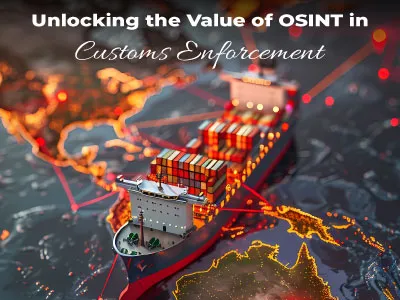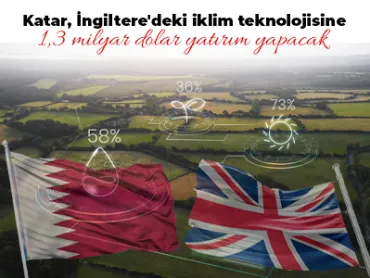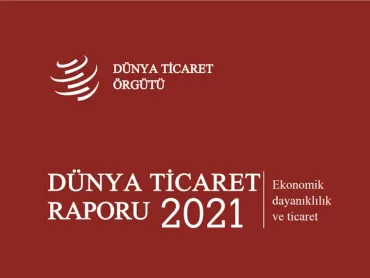
A New Working Paper by the WSO
The World Customs Organization (WCO) is pleased to announce the publication of a new working paper entitled “Unlocking the Value of Open Source Intelligence (OSINT) in Customs Enforcement”.
The study report stems from the 'Action Plan on Fragile Borders' adopted by WTO members during the 2023 Council Sessions. The Action Plan recognized the critical importance of OSINT, particularly in fragile and conflict-affected situations, and set out several objectives, including exploring the use of OSINT in customs enforcement.
The study report is designed for senior managers in customs administrations and provides a comprehensive exploration of how OSINT can be used to improve areas of practice. The report provides a comprehensive review that helps WTO member customs administrations understand and unlock the full potential of OSINT in their operations.
The report addresses three key questions that are essential for understanding and implementing OSINT in customs:
- Why is OSINT Important? This section explains OSINT's importance in customs operations and the unique advantages it brings.
- How to Leverage OSINT? The report provides insights on how customs administrations can leverage OSINT to strengthen their enforcement efforts.
- Implementation Strategies: Practical recommendations on integrating OSINT in customs administrations are provided, including strategies to overcome potential challenges.
The development of this study report started with a closed-door exploratory workshop in February 2024, attended by WCO staff and selected member administrations. This was followed by an awareness-raising panel discussion during the 'Implementation Committee' in March 2024, highlighting the critical role of OSINT in modern implementation strategies.
Based on these foundations, a pilot training workshop was held in Antwerp, Belgium in June 2024. The success of the workshop and the positive feedback received underscored the need for a comprehensive study report to support customs administrations in adopting OSINT. In this context, the WSO expresses its sincere thanks to Global Affairs Canada (GAC) for their generous support of the OSINT project, including the commissioning of the working paper.
Executive Summary of the Study Report
Open Source Intelligence (OSINT) is the process of collecting, analyzing, and using publicly and commercially available information to support intelligence and decision-making processes. It has become increasingly popular in recent years. Derived from Publicly Available Information (PAI), which is accessible to anyone with a few clicks on the Internet, OSINT has become the method of choice in sectors ranging from national security and intelligence to competitive analysis and investigative journalism.
OSINT allows its users to gather insights and make informed decisions without having to rely on sensitive or classified data. This working paper is aimed at senior managers in customs administrations interested in examining the possibility of incorporating OSINT into their practices. It aims to provide a comprehensive review of how WTO member customs administrations can unlock the value of OSINT. As OSINT is a very young discipline and relatively few customs administrations have begun to exploit its value, this study report should be considered as a step towards laying the foundation for OSINT in customs practice.
The study report demonstrates the benefits of OSINT for customs administrations and provides critical information for the implementation of OSINT in customs operations by answering three key questions
I. Why OSINT is important for customs administrations and what added value it offers;
II. How customs administrations can benefit from OSINT,
III. How OSINT can be implemented within the administration and how to address the specific challenges that arise in this process.
To address these questions, the study report is divided into four sections. The first section examines the concept of OSINT and its evolution over time. The second section provides information on the application of OSINT in different functional areas of customs enforcement. The third section is devoted to a use case on the application of OSINT in 'Strategic Trade Controls' and the last section analyzes the application of OSINT using the SWOT (strengths-weaknesses-opportunities-threats) methodology, identifying key success factors and recommending strategies to address the challenges and constraints arising from the application of OSINT.
The findings of this study report that the accessibility and cost-effectiveness of OSINT offers tremendous opportunities for customs administrations, with low barriers to entry compared to obtaining classified or proprietary information, and the timeliness of the information it provides compared to the often outdated information obtained from classified sources. OSINT can also catalyze the development of other types of intelligence (such as human intelligence, which is widely used in customs enforcement) by providing additional context and insights that allow for more comprehensive conclusions to be drawn. At the same time, due to its ever-evolving and collaborative nature, OSINT can serve as a stepping stone to encourage and support the adoption of the latest information and communication technologies (ICT), international and inter-agency collaboration, as well as ongoing developments in continuous learning.
The study report identifies several functional areas that could benefit from the use of OSINT. These areas include threat identification and risk management, trade compliance and fraud detection, smuggling and contraband prevention, and border security.
The Strategic Trade Controls use case allows readers to follow the topic more closely by delving deeper into OSINT techniques that can be incorporated into the field of export controls, from risk analysis and threat detection to investigation. The working paper also suggests how OSINT can be used to enhance inter-agency and international operations, providing the example of the WSO's 'Cosmo Operations', which focuses on combating illicit trade in strategic goods.
Finally, the working paper also presents a SWOT analysis of OSINT implementation. It makes several recommendations on how to address some of the threats and weaknesses. The recommendations range from broader strategies that apply to any major project implementation in a customs administration (e.g. ensuring political buy-in, securing the necessary financial and human resources, and ensuring an adequate legal and regulatory framework) to more specific areas (such as addressing ethical issues arising from the use of OSINT or ensuring access to continuing education given the evolving nature of the discipline). Leveraging the benefits of OSINT can help customs administrations better contribute to safety and security at both national and international levels. Given the scramble for resources and shrinking budgets common to any government agency, this working paper does not offer a panacea. Rather, it provides insights on how to unlock the potential of OSINT in the context of customs enforcement activities.
STUDY REPORT: Unlocking the Value of Open Source Intelligence (OSINT) for Customs Enforcement |
 Back
Back







